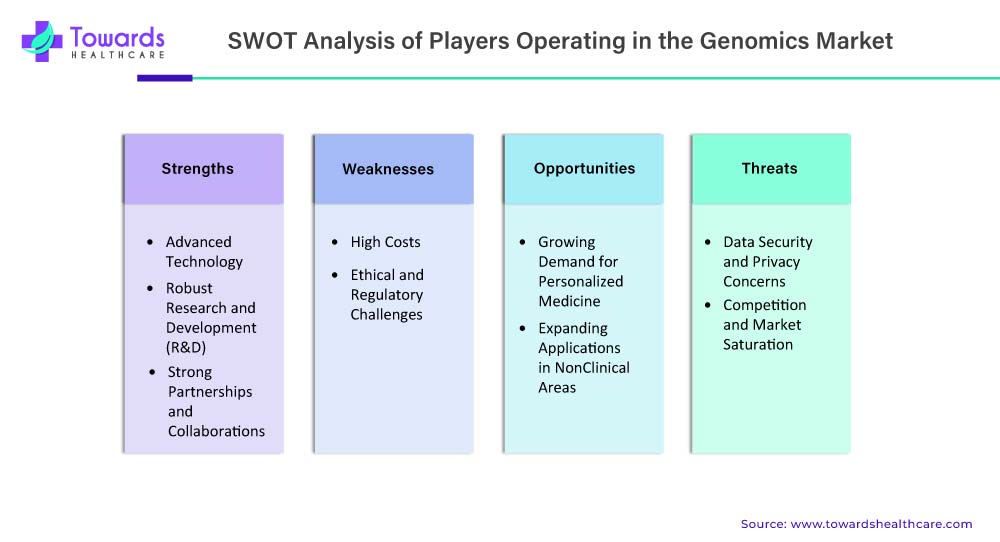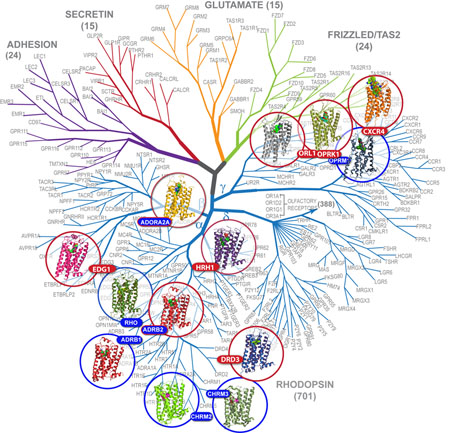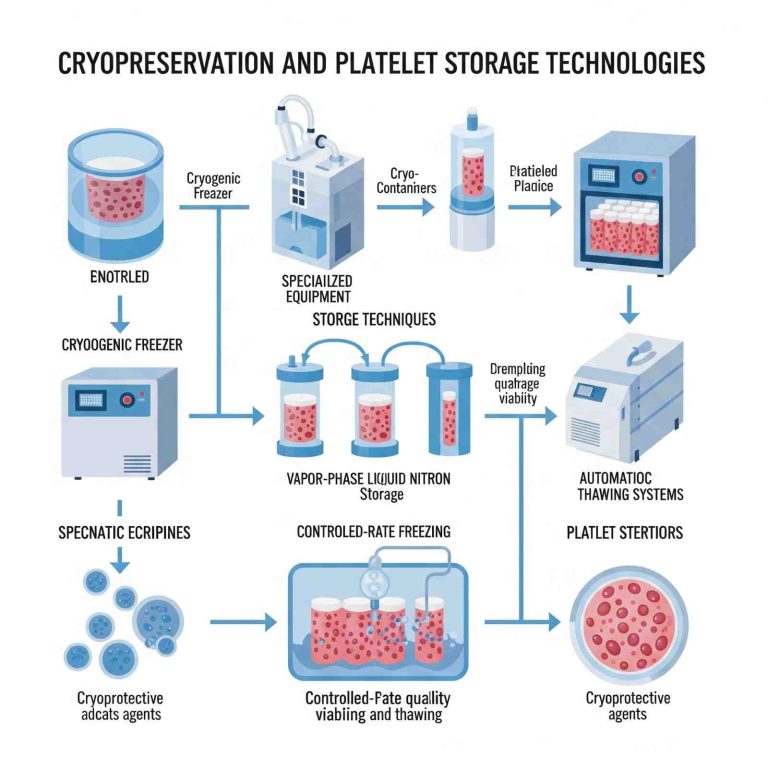
The Impact of Rising Genetic Disease Prevalence on the Genomics Market
The increasing prevalence of genetic diseases significantly influences the genomics market. Genetic disorders, including cancer, cardiovascular issues, rare genetic conditions, and inherited diseases, have a profound impact on global health. According to the World Health Organization, there are around 10,000 types of single-gene diseases caused by mutations in a single gene. It’s estimated that about 10 out of every 1000 people are affected, totaling approximately 70 million to 80 million individuals worldwide. This rising understanding of the genetic basis of these diseases has led to a surge in demand for genomic solutions and services, thereby contributing to the market’s growth.
For example, in the United States alone, around 6,000 babies are born with Down syndrome each year, making it approximately 1 in every 700 births, with a total of about 200,000 diagnosed individuals with Down syndrome. Genomics plays a critical role in diagnosing, predicting, and treating genetic diseases by identifying genetic variants and alterations associated with specific conditions, which facilitates personalized medicine approaches. Genomic sequencing technologies provide comprehensive analysis of an individual’s genetic makeup, offering insights into disease risk, drug response, and potential treatment options.
The application of genomics in genetic disease research and clinical practice has expanded significantly. Market players are developing advanced genomic tools, platforms, and services, including next-generation sequencing (NGS) technologies, microarray-based genotyping, and bioinformatics solutions for data analysis and interpretation.
Furthermore, the decreasing costs of genomic sequencing and the availability of large-scale genomic databases have further driven the adoption of genomics in healthcare, making genetic testing and genomic profiling more accessible and affordable. The growing prevalence of genetic diseases also emphasizes the importance of genomics in population health management and public health initiatives. Genomic screening programs, carrier testing, and newborn screening are being implemented to identify individuals at risk of genetic diseases and initiate appropriate interventions.
Bioinformatics and data informatics advancements are another major driver in the genomics market. These fields handle vast amounts of data generated by genomics, including genomic sequences, gene expression profiles, and clinical data. Effectively managing, analyzing, and interpreting this data is crucial for unlocking genomics’ full potential. Bioinformatics tools and platforms allow researchers and clinicians to analyze and interpret genomic data, identify genetic variations, and understand their functional implications. These tools also support population-scale genomics initiatives, such as large-scale sequencing projects and biobanks, allowing researchers to explore genetic variations across diverse populations and identify population-specific disease risk factors.
Data analytics techniques, like machine learning and artificial intelligence, play a vital role in genomics research and clinical applications. These techniques analyze large-scale genomic datasets, identify patterns, and generate predictive models for disease diagnosis, prognosis, and treatment response. Integrating genomics data with electronic health records (EHRs) and other clinical data sources enhances the understanding of genotype-phenotype correlations, enabling clinicians to make informed decisions based on comprehensive patient information and improving diagnosis accuracy, treatment selection, and disease management.
Download a short version of this report @ https://www.towardshealthcare.com/personalized-scope/5065
Challenges and Growth Factors in the Genomics Market
Genomic Data Complexity and Limited Functional Understanding of Genetic Variations
Despite significant advancements, the genomics market faces several challenges hindering its growth. One major obstacle is the complexity of genomic data interpretation and the limited understanding of the functional implications of genetic variations. Genomic data, with its billions of nucleotide sequences and numerous genetic variations, is incredibly intricate. Interpreting this data and identifying clinically relevant variations requires sophisticated bioinformatics tools, databases, and expert knowledge. However, the scarcity of skilled bioinformaticians and genomic data analysts poses a significant challenge in fully utilizing genomics potential.
Moreover, the functional impact of many genetic variations remains poorly understood. While genomic sequencing can identify these variations, determining their functional significance and clinical relevance is complex. The lack of comprehensive functional annotation databases and standardized guidelines for variant interpretation presents challenges in translating genomic data into actionable clinical insights.
Additionally, integrating genomics into routine clinical practice faces barriers such as regulatory requirements, reimbursement policies, and ethical considerations. Regulatory frameworks for genetic testing and genomic medicine vary across countries, making harmonization difficult and ensuring quality standards challenging. Uncertainties in reimbursement policies for genomic testing and personalized therapies limit access to genomics-based diagnostics and treatments.
Furthermore, ethical considerations surrounding genomic data privacy and patient consent pose challenges in genomic research and clinical implementation. Safeguarding patient privacy, ensuring informed consent, and maintaining data security are critical for maintaining public trust and facilitating the responsible use of genomic data.
The Role of PCR Technology in the Genomics Market
PCR technology holds the largest market share and is projected to be the fastest-growing technology over the forecast period. PCR, a widely used technique, allows for the amplification and analysis of specific DNA sequences, playing a crucial role in genomics research and applications.
PCR technology has witnessed significant advancements, leading to the development of various PCR-based techniques like real-time PCR (qPCR), digital PCR (dPCR), reverse transcription PCR (RT-PCR), and multiplex PCR. Each technique has its advantages and applications, catering to different research and diagnostic needs. The adoption of PCR technology in the genomics market is driven by factors such as its accuracy, versatility, and cost-effectiveness. PCR-based assays are extensively used in academic research, pharmaceutical and biotechnology companies, clinical laboratories, and forensic laboratories.
Geographical Landscape of the Genomics Market
North America, particularly the United States, dominates the genomics market, attributed to factors like strong research infrastructure, significant investments in genomics research, and the presence of key market players. The U.S. has a robust genomics ecosystem, including academic research institutions, pharmaceutical companies, and genomics service providers.
Following the passage of the Fiscal Year 2022 federal budget, the National Institutes of Health (NIH) received approximately $45 billion, allowing for continued progress in genomics research.
Europe, with countries like the United Kingdom, Germany, and France, is also a prominent market for genomics. It has a strong regulatory framework supporting the integration of genomics into healthcare systems.
Asia-Pacific is a rapidly growing market for genomics, driven by increasing investments in research, rising prevalence of genetic diseases, and expanding demand for personalized medicine. Countries like China, Japan, and India are making significant strides in genomics research, contributing to market growth.
Leveraging Integration of Genomics with Other -Omics Technologies: Opportunities and SWOT Analysis in the Market
Integration of Genomics with Other -Omics Technologies One significant opportunity in the genomics market lies in integrating genomics with other -omics technologies, such as proteomics, metabolomics, and transcriptomics. These integrated approaches, often termed multi-omics, offer a comprehensive understanding of biological systems and disease mechanisms. By combining genomics with other -omics data, researchers can gain insights into the complex interplay between genes, proteins, metabolites, and other molecular components. This integrated approach provides a more holistic view of disease processes, identifies novel biomarkers, and facilitates the discovery of new therapeutic targets. For instance, integrating genomics with proteomics enables the identification of protein biomarkers associated with disease progression, drug response, and treatment resistance, aiding in targeted therapies and treatment monitoring.
Similarly, combining genomics with metabolomics sheds light on the metabolic pathways influenced by genetic variations, enhancing our understanding of personalized nutrition, drug metabolism, and disease susceptibility. Furthermore, integrating genomics with transcriptomics allows exploration of gene expression patterns and regulatory networks, uncovering key genes in disease pathways, identifying dysregulated pathways, and predicting disease outcomes.
The integration of multi-omics approaches holds immense potential in advancing precision medicine. By combining multiple layers of molecular information, clinicians can develop personalized treatment strategies tailored to an individual’s unique molecular profile, improving treatment outcomes, minimizing adverse effects, and optimizing therapy selection.
Market players can capitalize on this opportunity by developing comprehensive -omics platforms, advanced bioinformatics tools, and data integration algorithms. By offering integrated solutions that combine genomics with other -omics technologies, market players can cater to the growing demand for holistic molecular insights in research, diagnostics, and therapeutic development.
SWOT Analysis of Genomics Market
Strengths:
- Many market players have access to state-of-the-art technologies for genome sequencing, analysis, and interpretation, enabling them to provide high-quality genomic data and services.
- Leading players invest heavily in R&D to develop innovative genomic solutions and expand their product portfolios, maintaining a competitive edge.
- Players establish strategic partnerships and collaborations, enhancing their market position through knowledge sharing and joint research initiatives.
Weaknesses:
- High costs associated with genome sequencing, data analysis, and infrastructure pose barriers to entry for some players, limiting their market reach.
- Ethical and regulatory concerns, such as privacy and data protection, require effective navigation to build trust and maintain reputation.
Opportunities:
- The focus on personalized medicine presents a significant opportunity, allowing tailoring treatments to individual patients, improving treatment efficacy and outcomes.
- Genomic data has applications beyond healthcare, including agriculture, biotechnology, forensics, and research, providing opportunities for diversification and tapping into new markets.
Threats:
- Genomic data’s sensitivity requires robust data security measures to prevent breaches and maintain trust.
- Intense competition can lead to pricing pressures and market saturation, making differentiation challenging for players.
To own our research study instantly, Click here @ https://www.towardshealthcare.com/price/5065
Read more about Genomics Market:
You can place an order or ask any questions, please feel free to contact us at sales@towardshealthcare.com
About Us
Healthcare Web Wire is a premier subsidiary of Towards Healthcare, dedicated to providing comprehensive insights and information related to the healthcare industry. With a commitment to delivering accurate and timely updates, Healthcare Web Wire serves as a vital resource for professionals, enthusiasts, and stakeholders within the healthcare sector. Our platform serves as a central hub for the latest news, trends and developments shaping the healthcare landscape. Join us on Healthcare Web Wire and become part of a vibrant community dedicated to advancing healthcare knowledge and shaping the future of healthcare worldwide.
Explore the comprehensive statistics and insights on healthcare industry data and its associated segmentation: Get a Subscription
For Latest Update Follow Us: https://www.linkedin.com/company/towards-healthcare





